
Wander to Macas, Ecuador An Off-the-Beaten-Path Rainforest Hideout
Deep in Ecuador’s southeastern jungle, Macas, Ecuador, offers a raw, untamed escape. With a population of about 18,984 (per the 2010 census), Macas covers roughly 2,592 square kilometers as part of Morona Santiago Province. Nestled in the Amazon region of Ecuador, this small city serves as the provincial capital. If “Macas, Ecuador things to do” or “hidden Amazon destinations” pops up in your search, this off-the-beaten-path spot awaits. Let’s uncover what makes Macas, Ecuador, a unique adventure.
Macas, Ecuador: A Cultural Tapestry
The culture in Macas, Ecuador, gets woven from its Shuar indigenous roots. Known for fierce resistance and traditions like head-shrinking, the Shuar shape local identity. Mestizo influences blend in too, adding Spanish colonial echoes. History gets told through tales of Sevilla del Oro, a 16th-century gold boomtown.
Community ties run strong. Respect for elders gets honored daily. Visitors often get welcomed with curiosity and warmth. So, Macas’ culture feels rugged, proud, and deeply tied to its jungle past.
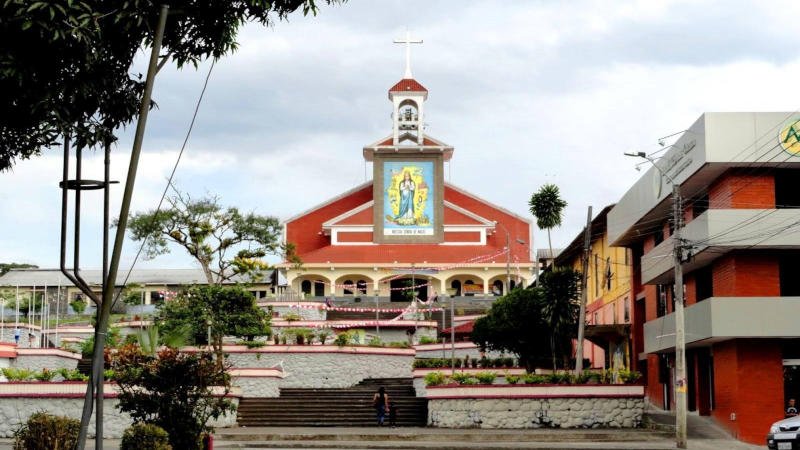
Food in Macas, Ecuador: Jungle Meets Tradition
Food in Macas, Ecuador, pulls from the Amazon’s wild pantry. Dishes like ayampaco—meat or fish grilled in bijao leaves—get savored often. Fresh river fish, like piranha or bocachico, get cooked simply. Yuca and plantains show up boiled, fried, or mashed.
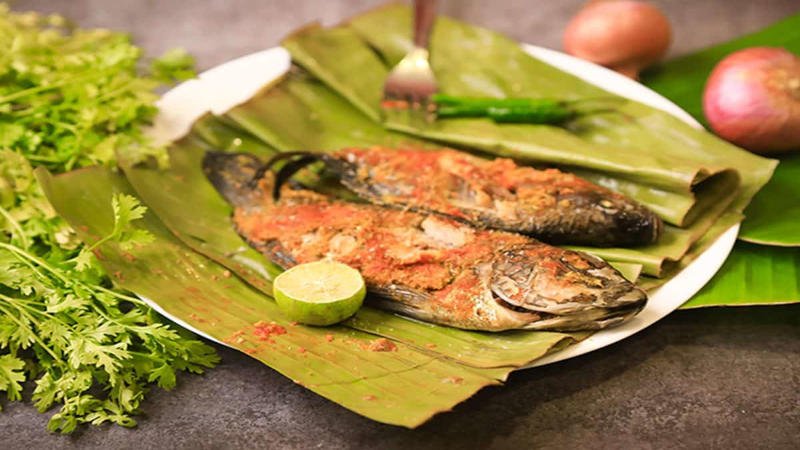
Adventurous bites include chontacuro—palm grubs roasted or raw. Chicha de chonta—a fermented palm drink—gets sipped at gatherings. Local fruits like guaba add sweetness. Freshness rules, thanks to the forest’s gifts. Thus, eating in Macas feels like a bold jungle feast.

Music and Customs in Macas
Music in Macas, Ecuador, hums with Shuar rhythms. Drums and flutes craft earthy tunes. Songs often echo hunting tales or jungle spirits. Dance gets kept simple, tied to rituals.
Customs center on survival and respect. Shuar ceremonies honor ancestors with chants and offerings. Nature gets revered—trees and rivers hold sacred weight. Festivals like the Morona Santiago anniversary in November spark communal joy. Consequently, Macas’ music and customs pulse with raw, ancient energy.
Economy and Industries in Macas, Ecuador
The economy of Macas, Ecuador, gets fueled by a handful of key drivers that reflect its Amazonian roots and small-city dynamics. Here’s what keeps Macas, Ecuador, ticking:
- Agriculture:
Farming stands as the backbone of Macas’ economy. The fertile jungle soil grows crops like bananas, cacao, coffee, and naranjilla (a tart citrus fruit). These get harvested by small farmers and shipped out, feeding both local markets and export chains. Livestock, especially cattle, graze the outskirts, adding meat and dairy to the mix. The region’s warm, wet climate keeps yields steady, making agriculture a reliable cash flow. - Ecotourism:
Tourism, especially tied to the Upano River, pumps life into Macas. White-water rafting on this river draws adventurers with its Class III to IV rapids—some of the best in Ecuador. Kayaking and jungle tours round out the offerings, with outfitters guiding visitors through lush forests and Shuar villages. Nearby Sangay National Park, a UNESCO site, pulls in hikers and nature buffs too. It’s not massive yet, but ecotourism’s growth keeps cash trickling in.
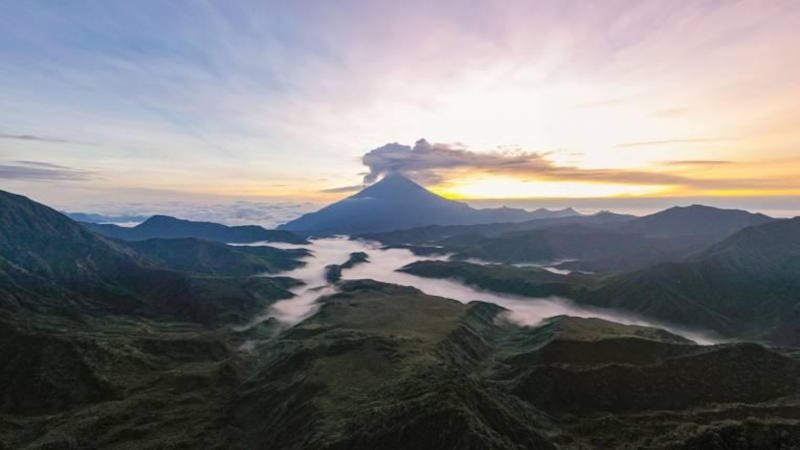
- Trade and Commerce:
Macas hums as a provincial hub. Small markets and shops sell Shuar crafts, fresh produce, and everyday goods. The central market gets packed with vendors trading jungle fruits and handmade items. As the capital of Morona Santiago, Macas hosts government offices too, boosting local spending. It’s grassroots trade, but it keeps the economy moving. - Forestry and Logging:
Timber from the Amazon edges plays a role. Hardwoods get logged—sometimes controversially—and sold for construction or export. Sustainable practices get talked up, but enforcement lags. Still, it’s a steady earner for some, though it stirs debate over environmental costs.
So, agriculture tops the list, with ecotourism, trade, and logging following close behind. Macas, Ecuador, leans on its jungle riches and rugged appeal to keep the economy alive and kicking.
Sports Teams in Macas
Sports in Macas, Ecuador, focus on football. Club Deportivo Morona reps the city in local leagues. Matches get cheered by tight-knit crowds. Soccer fields dot the outskirts, hosting youth games. It’s not a sports powerhouse, but passion runs deep. Therefore, a game in Macas feels like a community shout.
Distance from International Airports
Traveling to Macas, Ecuador, means picking your airport. Here’s the rundown, starting with the big three, plus Cuenca:
- Mariscal Sucre International Airport (UIO) in Quito: 340 kilometers southeast. The drive takes about 6-7 hours.
- José Joaquín de Olmedo International Airport (GYE) in Guayaquil: 300 kilometers east. Expect a 5-6-hour car trip.
- Eloy Alfaro International Airport (MEC) in Manta: Around 410 kilometers northeast. This one’s roughly 7-8 hours away.
- Mariscal Lamar International Airport (CUE) in Cuenca: 150 kilometers northeast. The trip clocks in at 3-4 hours by road.
These distances keep Macas remote yet reachable. Quito or Guayaquil offer solid options, but Cuenca’s closer hop makes it tempting too. Pick your starting point and roll!
Public Transport in Macas, Ecuador
Public transport in Macas, Ecuador, stays basic but functional. Buses connect to Quito, Cuenca, and nearby towns like Puyo. Fares get kept low, though buses can crowd up. Schedules flex, so patience gets needed.
Taxis roam the small city. Fares hover around $1-2 for short hops. Walking suits the compact center fine. For jungle trips, private vans or tour buses step in. Overall, getting around Macas feels gritty and practical.
Top Tourist Attractions in Macas, Ecuador
Macas, Ecuador, shines as an off-the-beaten-path Amazon base. The Catedral de Macas anchors downtown. Its modern arches draw eyes and calm vibes. The Parque Central buzzes with locals, perfect for people-watching.
Rafting on the Upano River steals the show. Class III to IV rapids thrill paddlers through canyons and waterfalls. The Macas Zoo houses jaguars and monkeys, a quick nature fix. Markets sell Shuar crafts and jungle eats. Thus, Macas’ attractions mix wild thrills with quiet charm.
Attractions Within an Hour’s Drive from Macas
Step outside Macas, Ecuador, and treasures unfold within an hour. Here’s what’s near:
- Sangay National Park (45 minutes): A UNESCO site with volcanoes and wildlife. Hiking trails stun.
- Los Coangos Waterfalls (50 minutes): A cascade in lush jungle. Great for a dip.
- Shuar Communities (30 minutes): Villages like Sucúa share traditions. Cultural visits enlighten.
- Puyo (60 minutes): A bigger Amazon town. Monkey rescues and markets beckon.
- Upano River Gorge (40 minutes): Rafting or scenic drives awe. Waterfalls crash down.
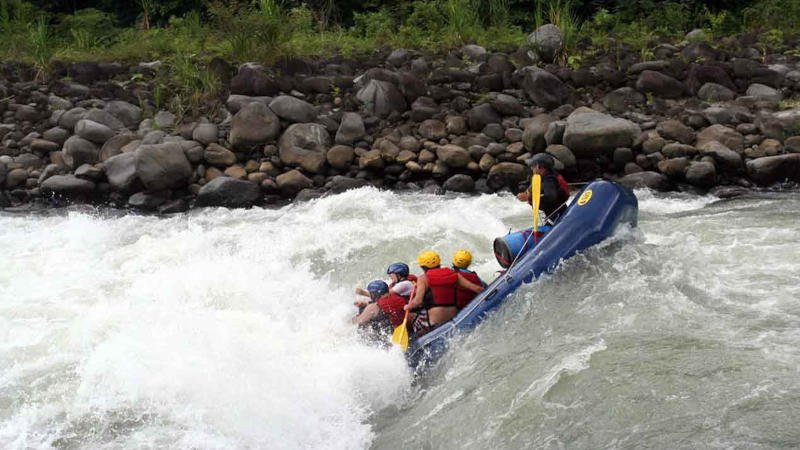
These spots blend nature and culture. Whether you crave wild or real, Macas’ backyard delivers.
Why Visit Macas, Ecuador?
Macas, Ecuador, lures as an off-the-beaten-path Amazon retreat. Its 18,984 residents fill 2,592 square kilometers with jungle grit, all in Morona Santiago Province. Shuar culture shines through food, music, and customs. Ayampaco and chicha tempt bold palates.
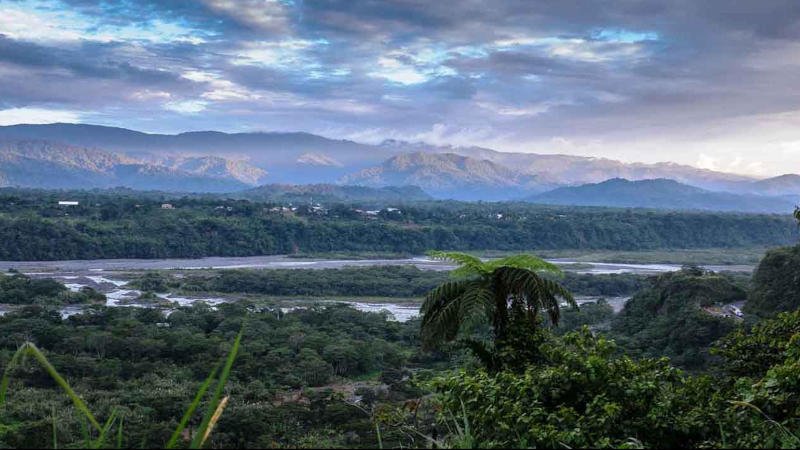
Farming and rafting drive the economy, with soccer sparking local pride. Buses and taxis link it up, while the Upano River and zoo top the tourist list. Nearby, Sangay and Shuar villages wait within an hour. So, if “Macas, Ecuador rafting” or “Amazon hidden towns” piques your interest, this spot calls. Pack up and venture—it’s a rugged escape worth chasing!





